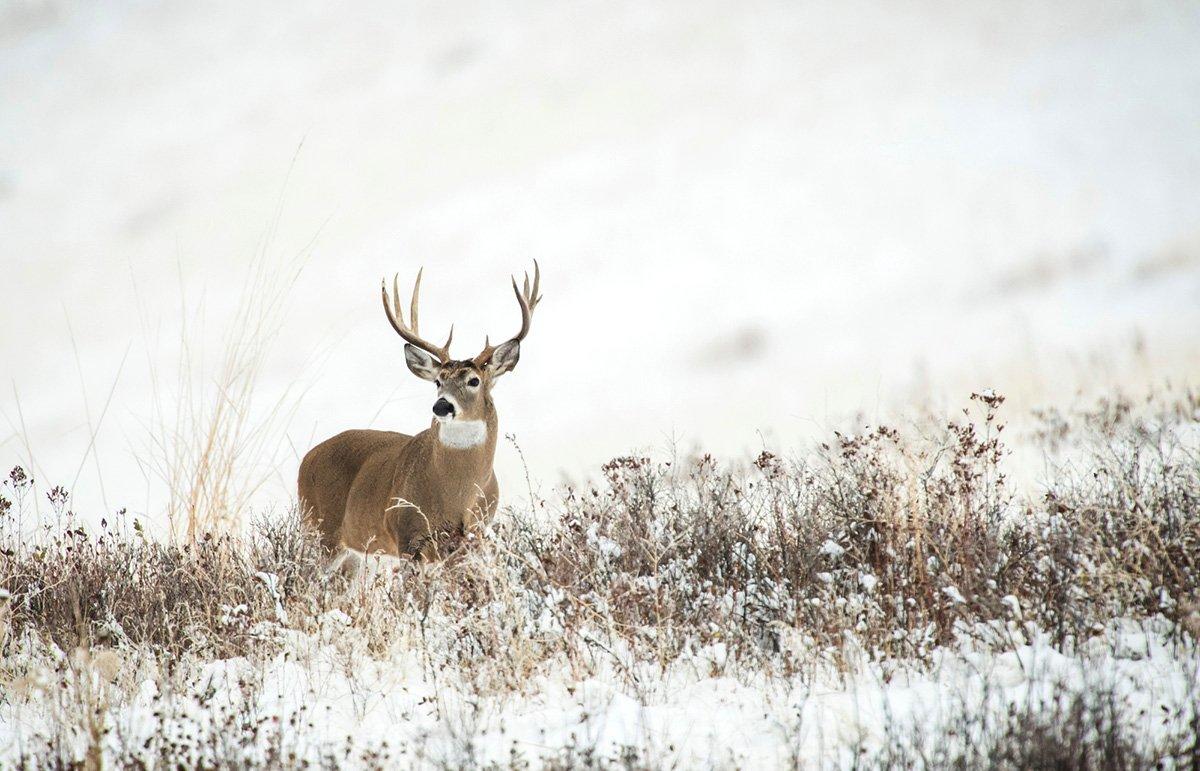Serious deer hunters know big bucks bed on south-facing slopes this time of year, but are they all they're cracked up to be?
Winter can be brutal on deer herds, but most whitetails nonetheless tough it out and survive. Instincts and calculated decisions guide them through these dreary days, often leading them to bed on south-facing slopes. Most deer hunters have heard of hunting these slopes at some point in the winter, and it's no myth that deer gravitate to them. But the reasons why are a little more complex than a simple direction on the compass — and simply hunting a south-facing slope isn't a guarantee of seeing late-season deer. Here's what to know.
Deer Seek Windbreaks
In winter, cold fronts with bitter temperatures and high winds typically come out of the north or northwest. Naturally, bedding on a south-facing slope helps block some of the razor-sharp cold, and in turn, conserves calories. That aside, regardless of the weather, mature bucks generally prefer to bed on the leeward (downwind) side of a ridge anyway. As noted by big-buck expert Dan Infalt, deer usually bed along the top third of a ridge in hill country, where the prevailing wind brings air over the top of the ridge to them, and thermals rise from the valley below. This allows deer to smell potential threats from two directions at once.
HeadHunters TV's Nate Hosie agrees. He says he oftentimes finds deer bedded up on in these spots, especially if thick cover is present. And, so does Quality Deer Management Association biologist Kip Adams (but with a caveat). "From experience, I know deer like to bed just over the edge of ridges, Adams said. It's not always because of scent, though, as thermals rise in the morning but fall at night. So, deer bedding there in late afternoon would be experiencing falling thermals.
South Slopes Are Warmer
In winter, in the northern hemisphere, the sun rises in the east-southeast, and sets in the south-southwest. Because of this, bedded deer on south-facing slopes receive both the first rays of sunlight, and the most sunlight throughout the day. In fact, depending on latitude, some southern slopes receive as much as 40 percent more sunlight during a given day than northern slopes, meaning they're almost always warmer during the winter. The difference can range from a few degrees to as much as 10. Because they're warmer, they typically hold less snow than the other side of the hill, and actually have a longer growing season - meaning more to browse on both later in the winter and earlier in the spring. Deer know this and take advantage of it when possible.
Consider the Big Picture
There are other factors to think about when trying to find a late-season buck than the nearest south-facing slope. Not every winter day is cold, and during warm spells, the thermal benefits of south slopes are diminished a bit. Focus first on leeward ridges, whichever direction they face.
Excessive hunting pressure can ruin any good spot, including a south slope. And of course, the overall landscape habitat needs to be good. Food is king year-around, but especially so in the late season. Deer aren't going to just bed on a south-facing hill if there isn't a quality food source nearby. They need cover, too. Early successional habitat is always preferable for bedding, and deer might abandon a south-facing hillside of mature forest if there's a thick clearcut nearby.
Still, the hearsay of the south slope is definitely true, and it's an important piece of the puzzle when it comes to zeroing in on a late-season buck. Keep the information in your hip pocket, and when you find yourself wondering where to scout or hunt next … try looking south.
Don't Miss: Kill a Late-Season Stud in 5 Days
Check out more stories, videos and educational how-to's on deer hunting.








